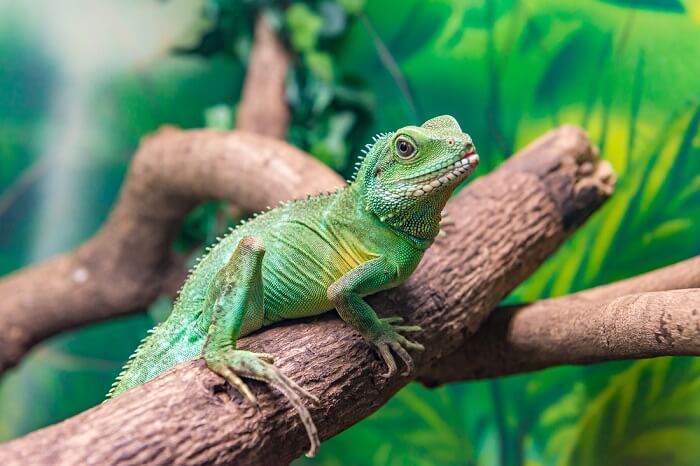Mexican Black Kingsnake: Care, Appearance And Temperament
This page contains affiliate links. We may earn money or products from the companies mentioned in this post through our independently chosen links, which earn us a commission. Learn More
The Mexican Black Kingsnake is a subspecies of kingsnake native to the Southeast US and northern Mexico. They are unique in the all-black coloration and can make a good pet for beginners and experienced keepers alike.
They tend to have a good temperament and do well with regular handling. They also have a simple diet and relatively easy care requirements, making them easier to care for than many other reptiles and at the same time, quite interactive!
General
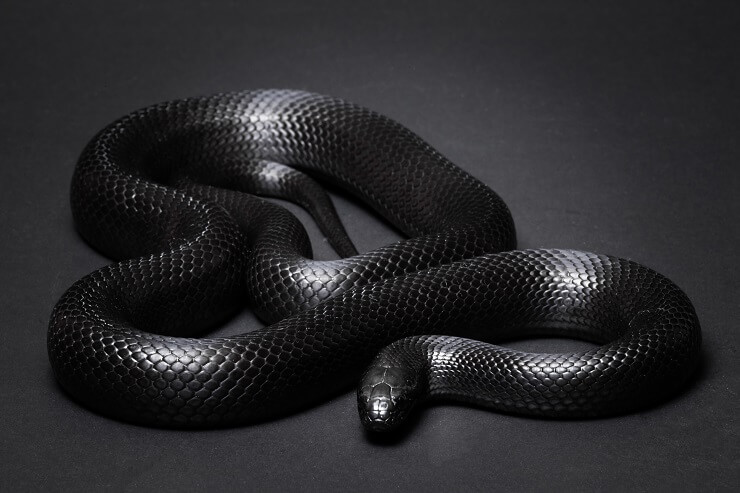
Mexican Black Kingsnakes can live 15- 20 years in captivity with good care. They’ll reach up to 4 feet in length by adulthood. In the wild, they are native to arid regions, including the Sonoran Desert and surrounding grasslands.
Most of the snakes in the pet trade are captive bred, which is better for the health and temperament of the pet and also better for the wild populations and their habitats.
They like to burrow and are opportunistic eaters, feeding on a variety of prey items in the wild. Known for their black coloration, they also have an iridescent hue to their skin unless approaching a shed.
Temperature
Like all reptiles, the enclosure should have a warm end and a cool end to allow a gradient of temperatures in the preferred zone for the species.
For Mexican Black Kingsnakes, the temperature should be in the upper 70s on the cool end and 85°F on the warm end. A basking spot of 90°F should be provided. At night, the temperature can drop to the mid-70s Fahrenheit.
Humidity
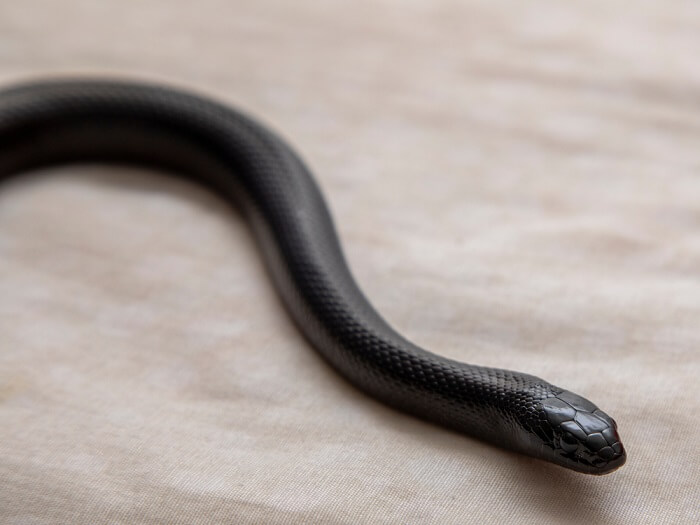
Although native to a desert, burrowing reptiles find higher humidity underground. Mexican Black Kingsnakes should have moderate humidity (40-60%).
If the enclosure is too dry, then they’ll experience difficulty with shedding and may become dehydrated. In most areas, this level of humidity is easy to achieve with intermittent spraying. Use a hygrometer to monitor humidity accurately.
Lighting
Full-spectrum lighting should be provided daily for 12 hours. Although there is no documented need for UVB in this species, a low-level UVB bulb would probably be beneficial based on studies with other snakes. For example, corn snakes (in the same family as Mexican Black Kingsnakes) had more than a three-fold increase in vitamin D levels after 28 days of UVB exposure.1
Enclosure
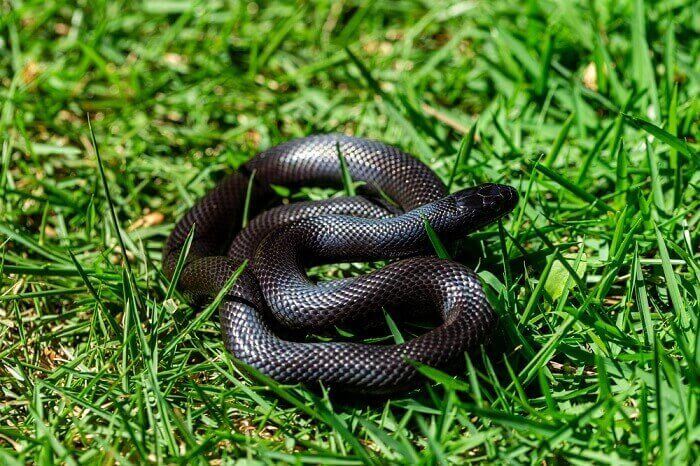
Any snake enclosure should allow the snake to fully stretch out into a linear body position. A review article published in 2021 in the UK looked at 31 previous peer-reviewed publications and 34 other papers on the subject and found a consensus on the need for snakes to be able to fully straighten their bodies.
That means that an adult Mexican Black Kingsnake will require a cage that is at least 4 feet long on one side. You can find the original paper here.
Mexican Black Kingsnakes like to burrow, swim and climb low branches. To allow for normal behaviors, the substrate should allow the snake to burrow down. Aspen, coconut fiber or sterile potting soil and sand mixture all work well for adults.
Avoid pine and cedar due to the irritating oils on those woods. The substrate should be at least 2-3 inches deep. It should be spot cleaned at least weekly and removed and replaced every 1-2 months, depending on how messy the snake is.
Furnishings should include hides on the warm and cool end as well as some low branches for climbing and exploring. Furnishings set up in that way allow expression of normal behaviors as well as a perception of being able to hide for security when needed. Security and allowing normal behaviors are an important part of ensuring you’re providing the best welfare for your pet.
Finally, there should be a water bowl in the enclosure. For these snakes, the water bowl would ideally allow some swimming, but soaking at a minimum. They can also be taken out to a tub for swimming enrichment.
Feeding
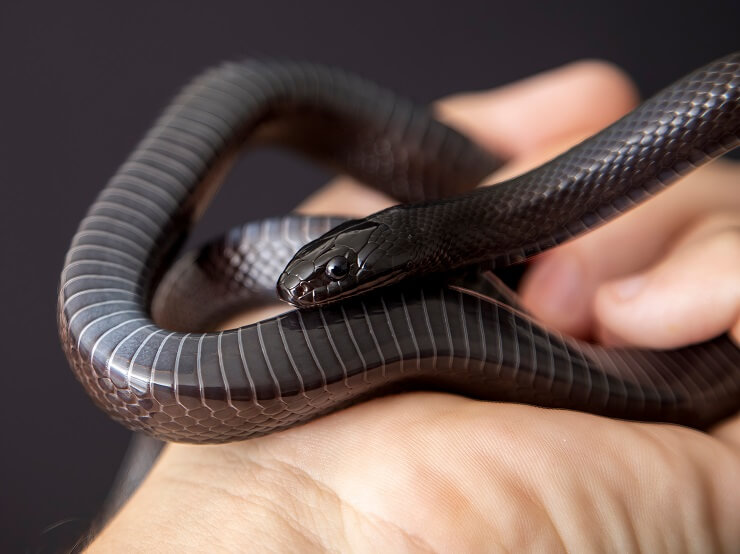
Since these snakes are opportunistic predators in the wild, they don’t tend to be picky eaters. Most will do well on a diet of rodents of the appropriate size. Look for a rodent that’s about the same thickness as the widest part of the snake’s body.
I highly recommend using frozen, thawed prey items to avoid potential attacks from the rodents and to decrease the chances of disease transmission to your pet. It’s also a good idea to feed in a box outside of the enclosure so that your pet doesn’t learn to strike at objects reaching into the cage (it may be your hand by mistake!).
For occasional variety you can offer a frozen-thawed bird or lizard. Younger snakes should be fed weekly, and by adulthood, you can reduce to every 2-3 weeks to avoid obesity.
Enrichment
A good enrichment program helps your pet thrive both physically and mentally. I already discussed coming out of the enclosure for supervised swimming in a tub.
Since they like to climb, you can also offer novel climbing opportunities. Anything that’s not too tall and has no sharp edges can be a good option. Pegboards, indoor clothes drying racks or even a chair can allow exploration and exercise.
Novel smalls, so long as not overwhelming, are a good mental simulation. Rubbing a lemon or orange peel or putting a very small amount of prey bedding in the cage can stimulate curiosity and exploration. Mix that with tactile enrichment by putting hay or leaves into the cage on occasion.
Finally, handling your snake can be the best enrichment of all- enrichment for both of you!
When To See A Veterinarian?
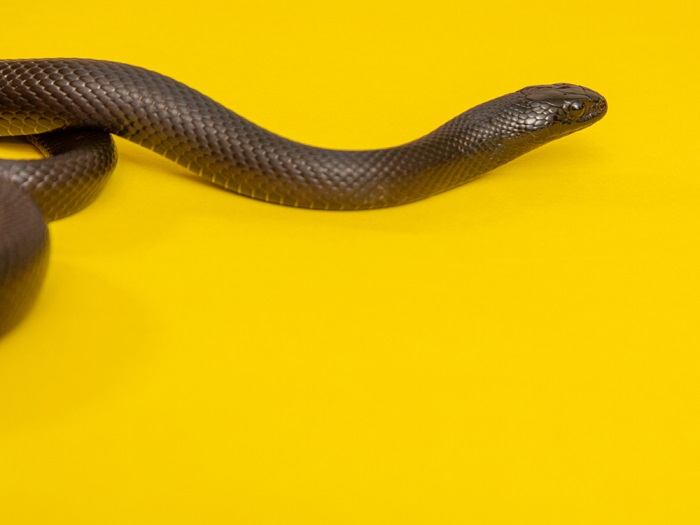
It’s important to find a veterinarian familiar with reptiles. Start your search here. When you first adopt your pet, you should have a wellness exam that should include a fecal test for parasites. Quarantine away from other snakes in your home until cleared by the veterinarian. Annual wellness exams are equally important for long-term health.
Between wellness visits, have your snake seen by a veterinarian if you see any sudden loss of energy, more than 2 meals are missed, there is difficulty shedding, any weight loss, regurgitation, whistling or wheezing sounds when breathing, or you have any other concerns.
Summary
Mexican Black Kingsnakes are relatively easy to keep and great snakes to have as a pet. They make an excellent choice for anyone looking for a unique snake that can be interactive!


